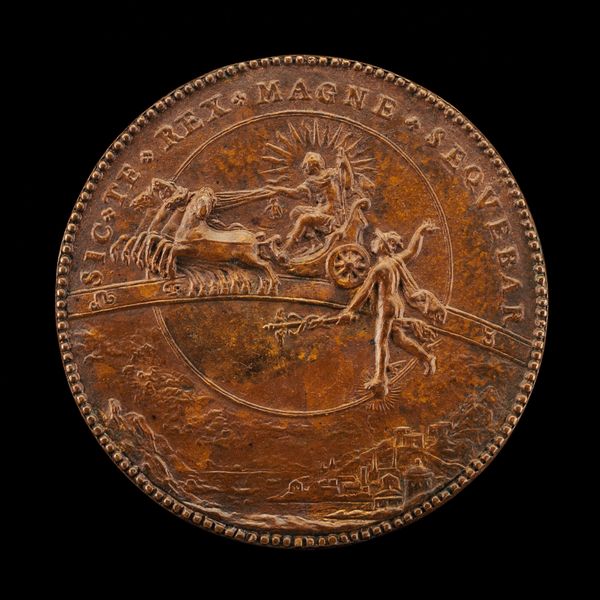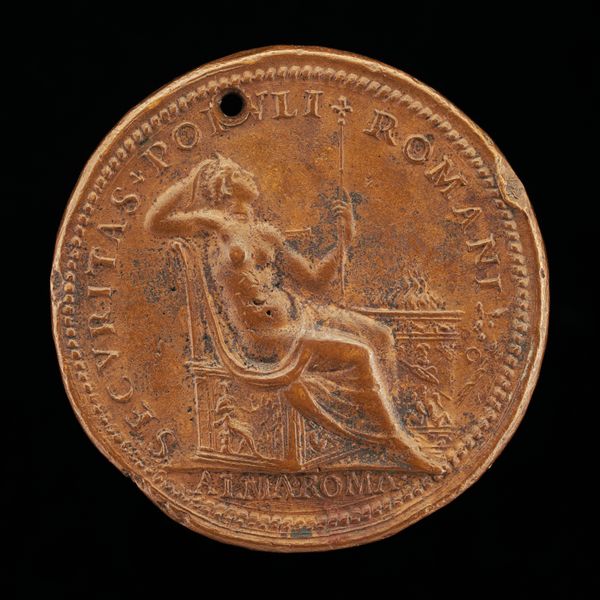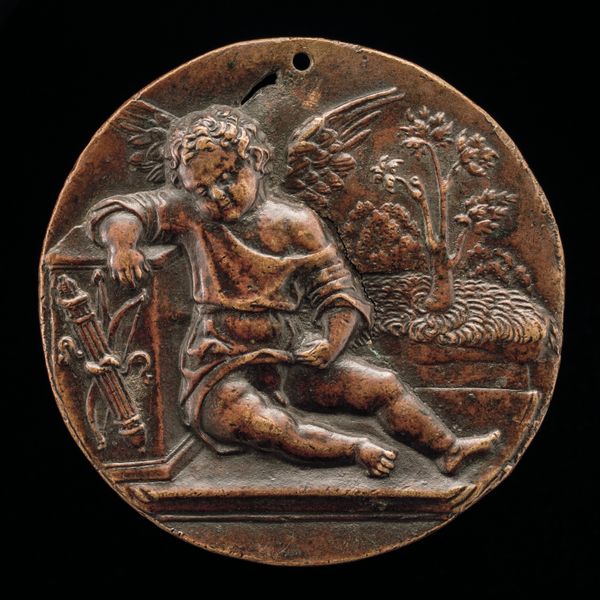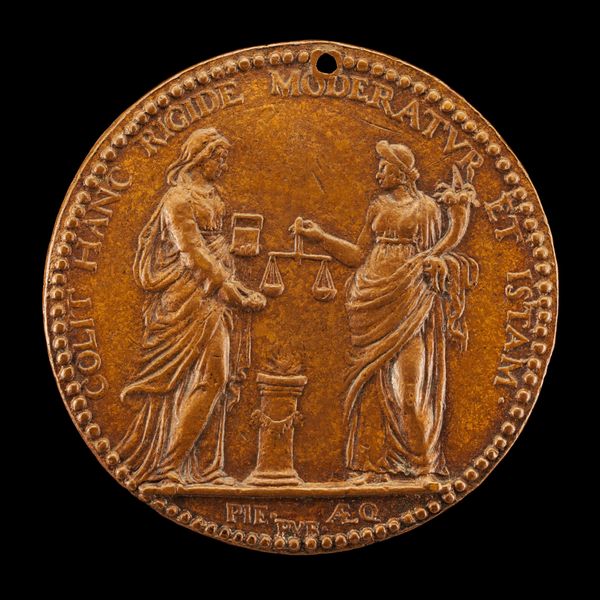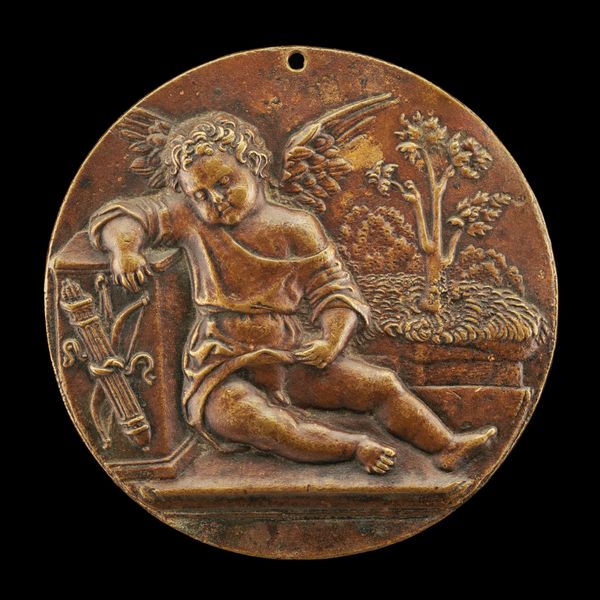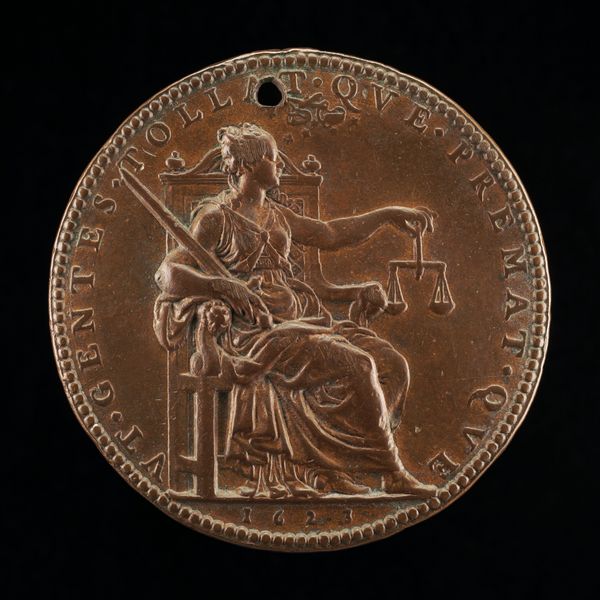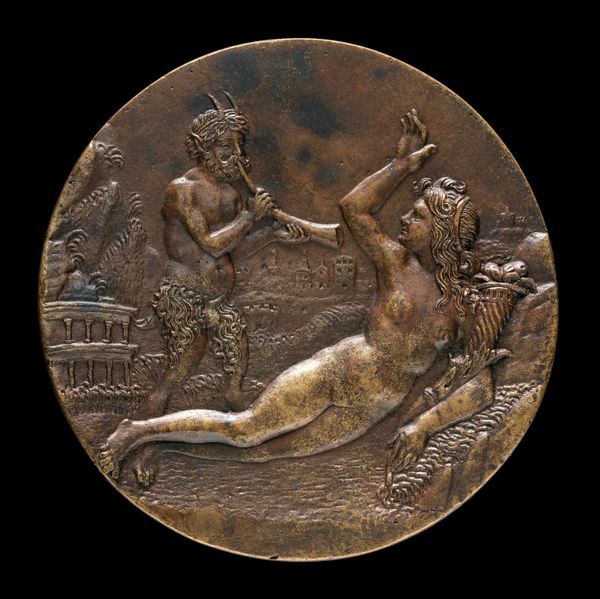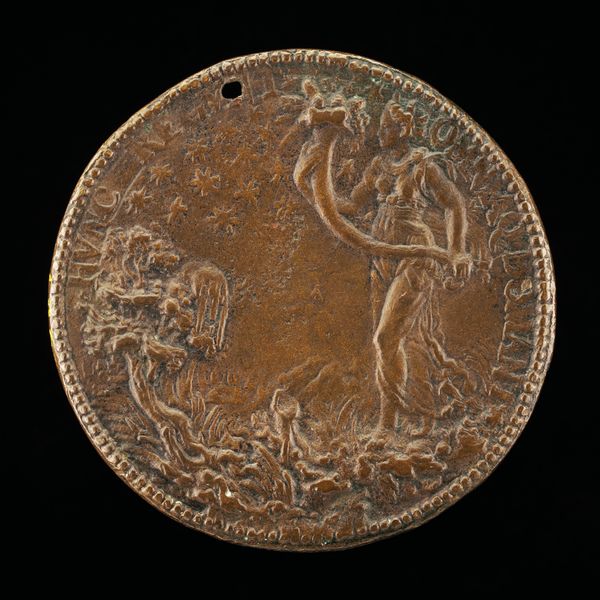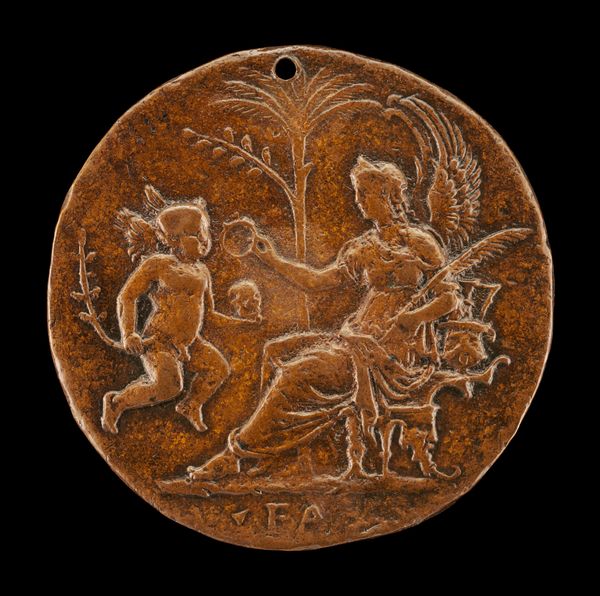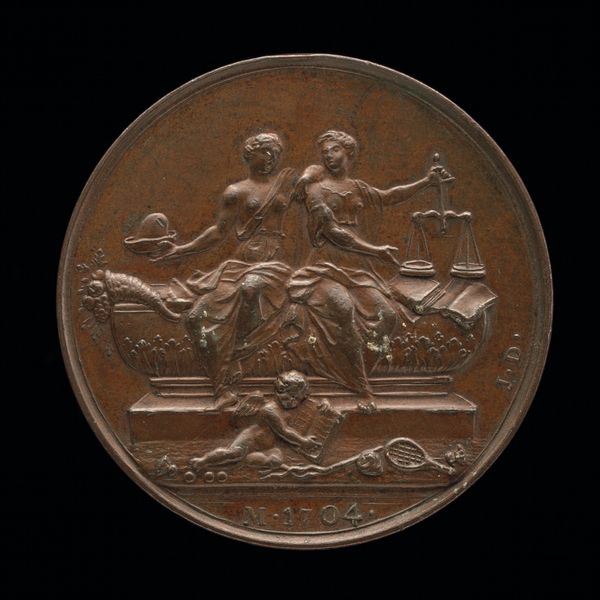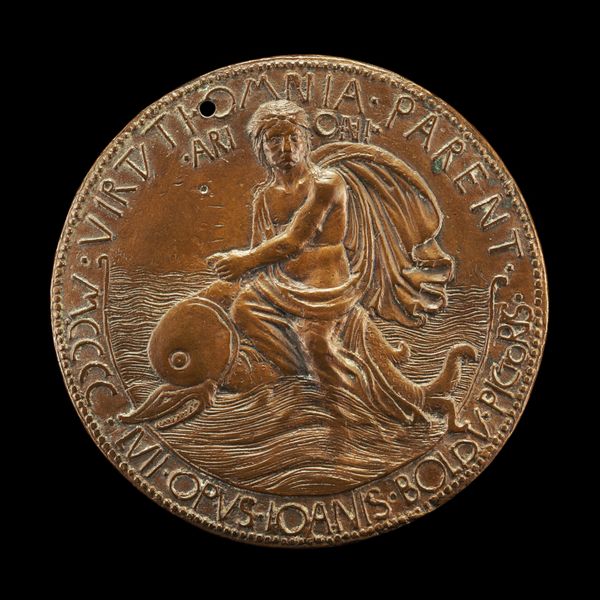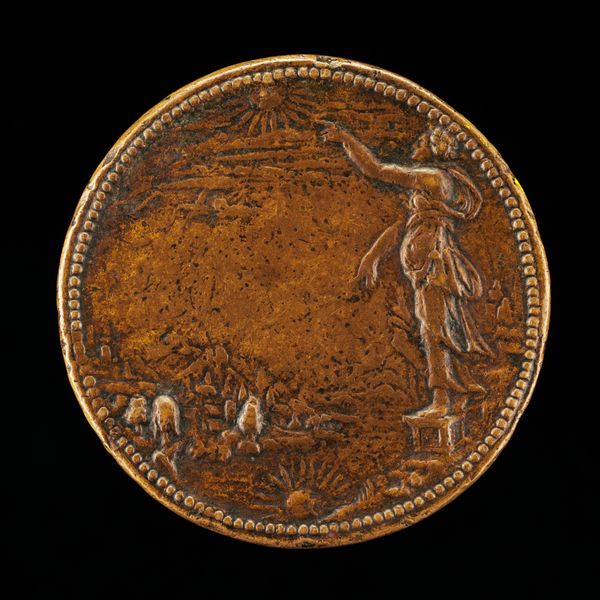![Seated Figure of the Church [reverse] by Giovanni Antonio de' Rossi](/_next/image?url=https%3A%2F%2Fd2w8kbdekdi1gv.cloudfront.net%2FeyJidWNrZXQiOiAiYXJ0ZXJhLWltYWdlcy1idWNrZXQiLCAia2V5IjogImFydHdvcmtzLzFhYzIyYTdhLWY2NTQtNDQzYy1iNTE2LTQxYzA2NmE4ZjE0Yy8xYWMyMmE3YS1mNjU0LTQ0M2MtYjUxNi00MWMwNjZhOGYxNGNfZnVsbC5qcGciLCAiZWRpdHMiOiB7InJlc2l6ZSI6IHsid2lkdGgiOiAxOTIwLCAiaGVpZ2h0IjogMTkyMCwgImZpdCI6ICJpbnNpZGUifX19&w=3840&q=75)
relief, bronze, sculpture
#
medal
#
allegory
#
sculpture
#
relief
#
bronze
#
11_renaissance
#
sculpture
#
history-painting
#
italian-renaissance
Dimensions: overall (diameter): 7.64 cm (3 in.) gross weight: 94.9 gr (0.209 lb.) axis: 12:00
Copyright: National Gallery of Art: CC0 1.0
Curator: This bronze relief, "Seated Figure of the Church [reverse]" crafted by Giovanni Antonio de' Rossi around 1555, presents a captivating allegory. It's striking how the figure dominates the circular composition. What impressions does it give you? Editor: A sense of scholarly pursuit, mixed with a latent strength. I immediately focus on the interplay of the active figure versus the passive backdrop: architecture looming and paddle awaiting in almost casual stance, plus that light glancing on aged, rich bronze... It’s both active and pensive, would you agree? Curator: Indeed. The patinated bronze as a material adds so much! Consider how bronze medals like this were manufactured in the Renaissance: casting processes, the artist's hand in the model, the multiple steps required to get it so clean, or perhaps purposefully rough? And what purpose did this one serve, do you imagine? Editor: As an iconographer, the seated woman's pose draws me in. She's absorbed in the text, presumably scripture or theological writing. It invites us to contemplate religious authority, or even re-interpret scripture, maybe it asks us: what is she REALLY thinking about. What symbols recur in this time period? Curator: Excellent point about symbols. To build on that: What does it mean to depict the Church through the physical object of a medal? We need to think about how value is literally impressed into the surface! This medal makes me reflect on access to knowledge and authority; bronze would not have been available to just anyone at the time... Editor: The building just behind is particularly potent. What could we make of the structure juxtaposed with her action, given its form? And the rudder next to the building -- is that meant to convey forward motion or even forceful navigation in turbulent times? Is she the pilot guiding the ship? Curator: Those interpretations, the symbols, the ways she actively studies--it highlights the Church's active role in society. To really bring our analysis back around, I think it's imperative to see a connection between production and social meaning; by considering how an object like this operated, how and where, then we can connect that labor with its inherent meaning.. Editor: Absolutely! In revisiting, I now see how that the intentional patina makes the entire medallion almost speak to its own history! It suggests the Church itself, marked by time and experience, and I appreciate that even more deeply now. Thank you. Curator: And thank you. Understanding these historical touchstones helps give us richer material for understanding these artworks on view today.
Comments
No comments
Be the first to comment and join the conversation on the ultimate creative platform.
